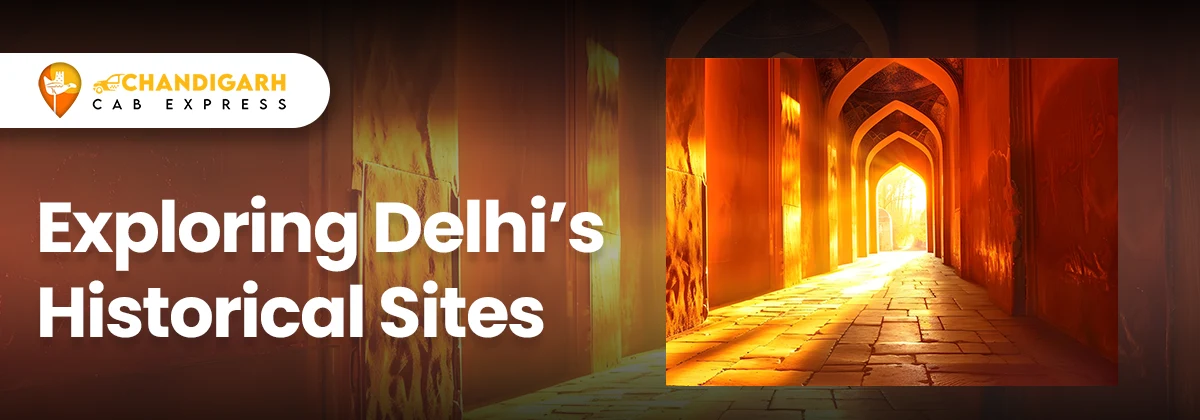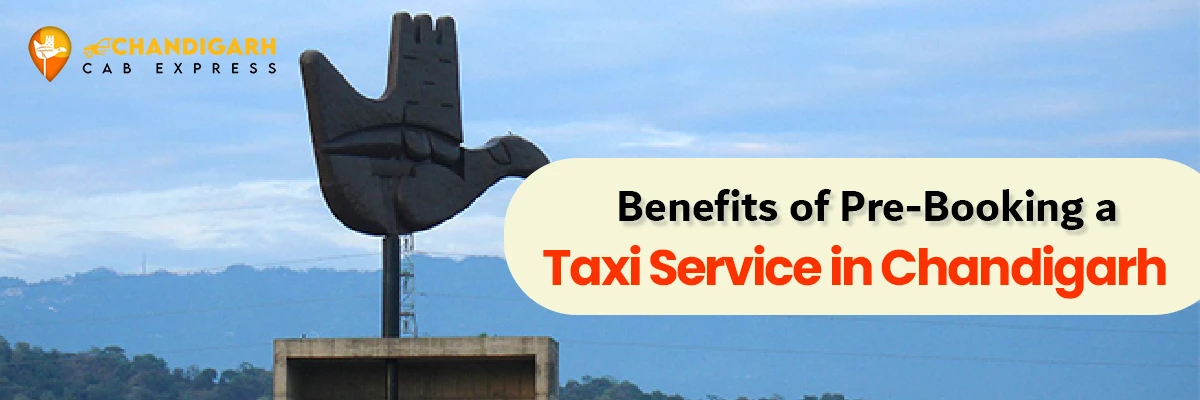Exploring Delhi’s Historical Sites

Introduction
Exploring Delhi’s Historical Sites can be an enriching experience, especially for those coming from nearby cities like Chandigarh and looking to make a weekend or long-term trip to the capital region more meaningful. From centuries-old forts to grand tombs, majestic mosques to colonial-era memorials, the city’s historical landmarks are as varied as its many eras.
In this Chandigarh to Delhi taxi guide, learn the best places to visit in Delhi, why they’re worth seeing, and practical tips on how to get the most of exploring Delhi’s historical sites.
Why “Exploring Delhi’s Historical Sites” is a Living Experience
Delhi is an open-air museum with each street, monument, and market having hundreds of years of history.
From the Mauryan Empire to the Mughals and finally the British Raj, Delhi has been the seat of power for many dynasties in India. What’s left behind are not just structures of immense historical importance, but also testimony to a country that has for centuries seen itself defined, redefined and overhauled by conquerors and kings.
If you are looking to hire a Chandigarh to Delhi taxi one way, here are the six best historical places in Delhi to see. Read on to find out why it’s not just a trip, but a living experience.
Call us to book your historical site tour.
Understanding Delhi’s Historical Landmarks
Let’s quickly go over Delhi’s different historical areas.
From ancient to medieval and colonial, Delhi’s capital status meant it was a natural seat of power for most empires and dynasties that arrived from central Asia. Every era left its own unique stamp of architecture, culture, and statecraft on what was then an already old settlement.
Needless to say, most of Delhi’s landmarks are among the city’s most iconic, visited, and best-loved places. As such, when arriving in Delhi via Chandigarh to Delhi cab, it’s worth knowing the highlights before visiting.
Red Fort: A Living Symbol of Independence
UNESCO World Heritage Site Red Fort is as much a symbol of India’s independence movement as it is a grand architectural feat.
Commissioned by Emperor Shah Jahan in 1648, the fort served as the residence of the Mughal emperors until the 1857 mutiny. The walls of Red Fort have since witnessed countless ceremonies of India’s independence struggle and, until today, the Prime Minister still gives the Independence Day speech to the nation from the ramparts of this massive fort every August 15.
Why visit:
Walking around the Diwan-i-Aam, Diwan-i-Khas, Rang Mahal and the museum inside this sprawling Red Fort complex is a great way to understand India’s rich Mughal history. You will also learn a lot about the story of India’s independence movement.
Tip:
Book a Chandigarh to Delhi cab early in the morning and come back to visit in the afternoon when it is cooler. Stay for a while to catch the sound-and-light show at sunset and have dinner at a restaurant within the fort complex.
Also Read -
Qutub Minar: India’s Tower of Victory
Qutub Minar, at a height of 73 meters, is the tallest minaret of the world made from brick and has been standing proud since it was completed in 1198.
It is the starting point of the rule of Muslims in India and the central piece of Delhi’s premier landmark: Qutub complex, Qutub Minar.
Why visit:
This tourist hotspot is where you can find an ancient iron pillar (over 1,000 years old), beautiful inscriptions and ruins of some of the earliest mosques of India. A perfect place for history buffs, the site also offers the best Indo-Islamic architecture in Delhi.
Tip:
Many schools also take their students on educational trips to Qutub Minar. A weekday visit might be quieter if you are traveling in Chandigarh to Delhi taxi.
Humayun’s Tomb: The Father of Taj
Humayun’s Tomb is the resting place of Mughal emperor Humayun, who died in 1556.
- Construction of the Tomb started in 1565 and was completed in 1572.
Built over 20 years before the Taj Mahal, Humayun’s Tomb is the first Garden tomb in India and Mughal architecture at its finest.
Humayun’s Tomb was the inspiration for the Taj and was designated a UNESCO World Heritage Site in 1993.
Why visit:
The masterful symmetry and design of Humayun’s Tomb makes this one of the most tranquil historical sites in Delhi. Visitors can relax in the beautifully landscaped gardens and meander around monuments made from red sandstone and white marble. It’s the perfect place to take a stroll, reflect and get a break from Delhi’s bustling crowds.
Fun fact:
During the Partition, Humayun’s Tomb was used as a refugee camp.
India Gate & Rajpath: Memorial, Public Space & Colonial Architecture
India Gate was commissioned by the British and designed by the architect Edwin Lutyens. The structure commemorates more than 70,000 soldiers of the Indian Army who died fighting in World War I.
Why visit:
A visit to India Gate is a solemn but moving experience. Visitors will find the Amar Jawan Jyoti (Eternal Flame of the Soldier) under the arch. This flame is a powerful reminder of the sacrifices made for the freedom of the nation.
It’s also a great place to catch some local flavor as India Gate and the lawns are a popular evening stroll for both locals and tourists. The boulevard of Rajpath, on which the India Gate is located, is one of the grandest in the city.
Critique:
It may be argued that the Gate is a vestige of British colonialism. However, most people have since repurposed the memorial as a symbol of national togetherness.
Tip:
Planning a Chandigarh to Delhi taxi service on a one-way rental for the evening? Head here before the sun sets for some great people-watching, local snacks, and stunning photography opportunities
Jama Masjid: A Heritage of Belief
One of India’s largest mosques, Jama Masjid is an active place of worship with an imposing dome and two 40-meter high towers.
Construction on the mosque started in 1650 and was completed in 1656. In addition to its role as a place of worship, Jama Masjid is also an important tourist destination and landmark in Delhi.
Why visit:
Make your way up one of the minarets for some of the best panoramic views of Old Delhi.
Tip:
When visiting, dress modestly and come during non-prayer hours if you can.
Purana Qila: Delhi’s Underappreciated Old Fort
Delhi’s lesser-known Old Fort, Purana Qila, may not enjoy the same tourist throngs as Red Fort, but that’s one of its charms.
Old Fort is not only older, but its construction is also said to have started on the site of the mythical city of Indraprastha, the capital of the Pandavas in the epic Mahabharata.
Why visit:
One of the quieter historical sites in Delhi, Old Fort has fewer crowds which makes it more peaceful. Old Fort has a small museum, offers boating in its moat and has great gardens, making it a family-friendly attraction.
Bonus Tip:
Planning a family day out with Chandigarh to Delhi cab in Delhi? Combine this with a visit to Delhi Zoo, which is next door to Old Fort.
Plan your guided heritage trip—just call us!
Helpful tips while visiting historical places in Delhi
If you are coming into Delhi from another city via Chandigarh to Delhi taxi, here are some more tips:
Start early: It can get really hot (especially April to June), so make an early start.
Travel light: Carry your own water, sunscreen, a hat and wear comfortable walking shoes.
Weekdays over weekends: Delhi’s major historical monuments are less crowded during the week.
Get a guide or audio tour: Learning about these places helps you connect with them better.
Remember you’re not just a tourist: Treat these as special spaces, don’t litter and be careful around the monuments.
Conclusion: Exploring Delhi’s Historical Sites is a Living Experience
Exploring Delhi’s historical sites is not just a matter of visiting old places of worship, power or battle.
Visiting Delhi’s historical sites is in itself a living experience, one where the past and the present have an active and vibrant dialogue. Engaging with historical sites in this capital city with so many dynasties and empires allows travelers to not just learn about the faith, courage, rule and resilience that have defined India for so long, but to feel it too.
And when traveling in Chandigarh to Delhi taxi, taking care of transportation while still planning other aspects of your Delhi trip allows for more flexibility.
As always, compare Chandigarh to Delhi cab online to get the best price deals and always book early!
Enjoy your next visit to the historical Delhi and remember, when you are searching online for Chandigarh to Delhi taxi price – you’re not just searching for a car, you’re about to begin a journey.
Latest Posts

Comfort vs Budget: What to Choose?

Why Manali Road Trips Are Popular

Fastest Routes for Delhi Travelers

Tips for Booking Safe and Timely Local Rides
Related Posts
Categories

Scenic Travel Guide for Manali Trip

Best Ways to Choose a Taxi Service





